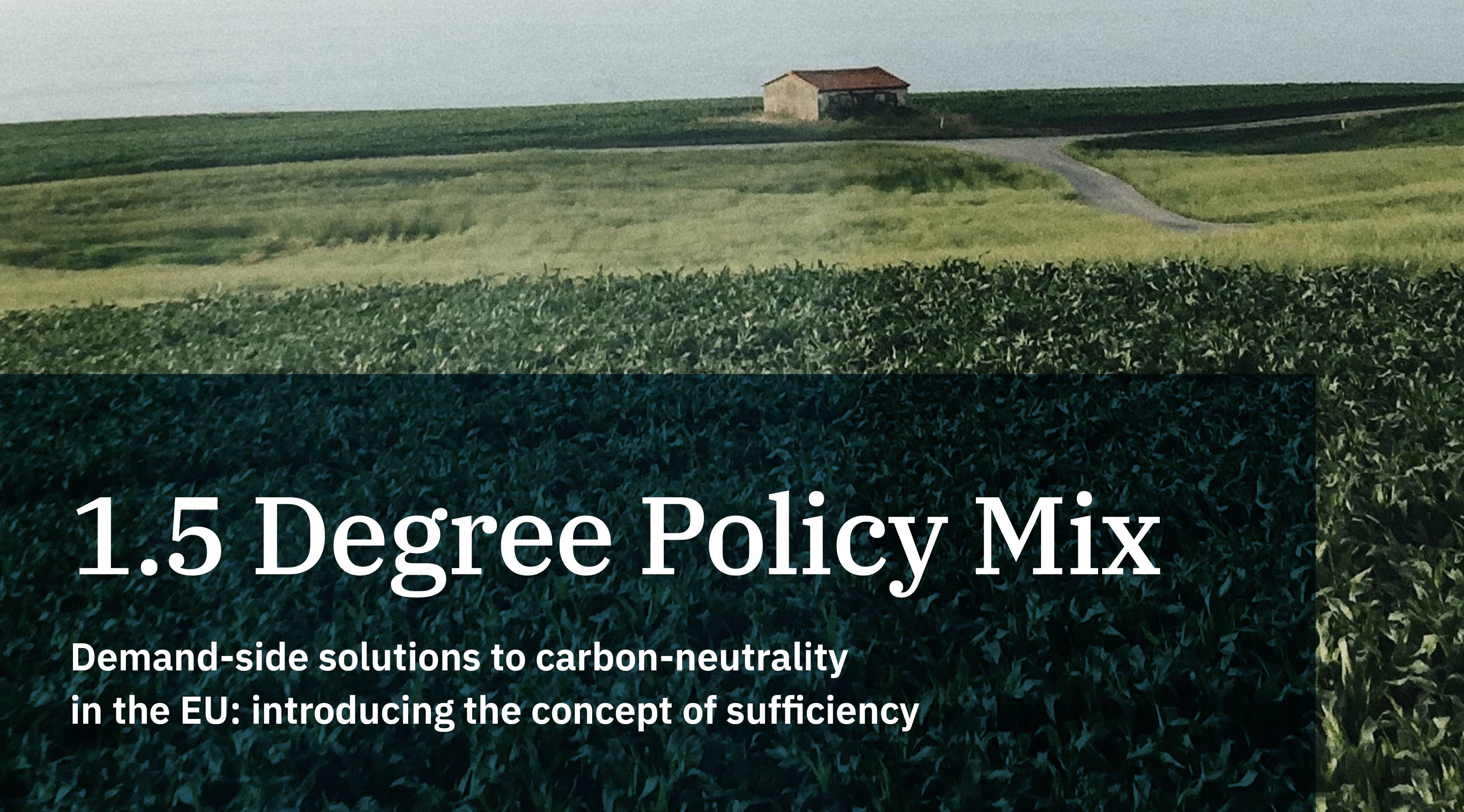
To deliver the European Green Deal and meet 2030 and 2050 climate targets, the European Union (EU) needs to ensure that policies effectively and absolutely reduce environmental impact on an unprecedent scale.
To this end, EU institutions need to embrace a broader policy mix, complementing current technology-orientated efficiency improvements with ambitious policies tackling scale and patterns of consumption. Both the Sixth Assessment Report of the United Nations Intergovernmental Panel on Climate Change (IPCC) and the United Nations Environmental Programme (UNEP) Emissions Gap Report 2020 feature demand-side mitigation strategies as highly effective measures against the climate crisis1. However, individual consumption is only one side of the coin. It is public policies that define and shape the direction and open room for manoeuvres. Introducing a sufficiency perspective, this policy brief sheds light on the institutional and systemic possibilities for EU policies to realize a society living well within the limits of our planet.
By integrating demand-side policies into current EU policy strategies and agendas such as the European Green Deal, the New Consumer Agenda, or the Sustainable Products Initiative, the EU has the potential to position itself as the leading example on enabling consumption and lifestyle patterns that are oriented towards wellbeing and go along with the Paris targets of limiting global warming to 1.5 degrees. This policy brief introduces practical examples in the realms of mobility, housing, food, and household consumption, showing that measures which keep consumption within planetary boundaries are both desirable and feasible.


